Christie’s’ Art of the Surreal 27 February 2018
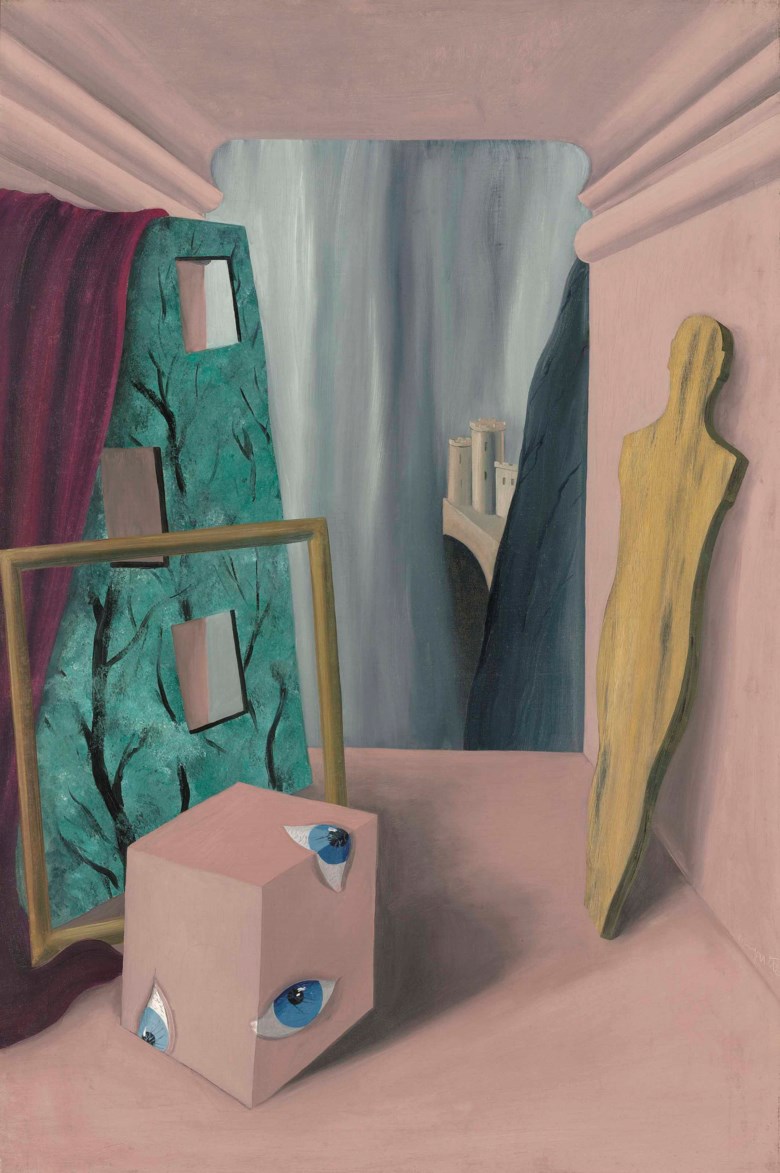
René Magritte , Le groupe silencieux , oil on canvas, 1926, estimate: £6,5 00,000 - 9,500,000
The sale includes seven paintings by René Magritte, led by Le groupe silencieux (above), (1926, estimate: £6,500,000 - 9,500,000) an important example of his early Surrealist style, and where all the pictorial devices, props and structures that go into the making of a so - called ‘figurative’ or ‘representational’ painting have been rendered in an unusual, subversive manner. The work is one of a pioneering series of oil paintings that the artist made between January 1926 and April 1927 in preparation for his first one - man show, held at the Galerie le Centaure, Brussels in the spring of 1927. In conjunction with his deconstruction of the components of landscape and still - life painting there is also a sense that the representation of the human figure has been broken down into parts. This painting is, in this respect, a landmark work that establishes some of the logic and framework of the aesthetic path that Magritte was to follow for the rest of his life.
Le groupe silencieux is offered alongside

L'état de veille (1958, estimate: £150,000 - 200,000),
Nu (1925, estimate: £100,000 - 200,000),

La recherche de l'absolu (1948, estimate: £1,000,000 - 1,500,000),

L’explication (1962, estimate: £400,000 - 700,000),

Les signes du soir (1926, estimate: £1,500,000 - 2,500,000 )

and L'oasis (1926, estimate: £1,400,000 - 2,000,000).
Christie's Impressionist and Modern Art on 13 November, 2017
Property from an Important Private Collection. René Magritte (1898-1967), L’empire des lumières, Painted in Brussels, 1949. Oil on canvas, 19.1/8 x 23.1/8 in. Estimate: $14-18 million
On November 13, Christie’s will offer René Magritte’s L’empire des lumières, 1949 (estimate: $14-18 million) as a highlight of the Impressionist and Modern Art Evening Sale. The present canvas is celebrated as one of the artist’s most iconic works and is the very first example that Magritte completed from his landmark L’empire des lumières series. A theme that he would spend the subsequent fifteen years exploring. Coming from a private collection, L’empire des lumières, was first-owned by Nelson A. Rockefeller. It was acquired by Rockefeller in 1950, then chairman and president of Chase National Bank, while also serving in similar roles at The Museum of Modern Art, New York..
Sharon Kim, International Director of Impressionist & Modern Art at Christie’s, comments,
“Christie’s is honored to have the opportunity to bring this important work to auction for the first time when the global market is currently exhibiting a strong demand for surrealist masterpieces. This a landmark work in Magritte’s oeuvre—the first complete canvas in the artist’s iconic series L’empire des lumières—making this an extremely exciting opportunity for buyers.”
The iconic series, that was launched with this picture, is centered around a concept which explores the harmony and tension between day-and-night, a theme at the very heart of Surrealism. Additional paintings from this series were acquired by many of the greatest private collectors of the 20th-century, including Jean and Dominique de Menil, Peggy Guggenheim, composer Richard Rodgers, and Harry Torczyner, one of Magritte’s most dedicated collectors. They also can be seen in the permanent collections of The Museum of Modern Art, New York, and the Musées Royaux des Beaux-Arts de Belgique, Brussels.
Each successive picture displays the key elements seen in the present, original L’empire des lumières—a nocturnal street scene in a placid, well-maintained quarter of town. This quiet view was similar to Magritte’s own rue de Esseghem in Brussels, with eerily shuttered houses, windows faintly lit from within and a single lamppost, shining forth like a beacon. The hour is late, and most of the occupants are presumably asleep. Only the onlooker is witness to the bizarre vision above—a night sky with neither moon nor stars, lacking the least hint of darkness. For as far as one can see, a blue sunlit sky with lazily drifting white clouds fills the ether expanse. In the characteristic, straightly descriptive manner in which Magritte painted this scene, all is as natural—but in myriad connotations, also as paradoxical—as night and day.
The beauty and revelation of L’empire des lumières—perhaps what contributed to its enduring status—is that Magritte reconciles the traditionally opposing elements of earth and sky, night and day, darkness and light to the underlying harmony found in these contrasts. “After I had painted L’empire des lumières,” Magritte explained to a friend in 1966, “I got the idea that night and day exist together, that they are one. This is reasonable, or at the very least it’s in keeping with our knowledge: in the world night always exists at the same time as day. (Just as sadness always exists in some people at the same time as happiness in others.) But such ideas are not poetic. What is poetic is the visible image of the picture” (quoted S. Whitfield, Magritte, exh. cat., The South Bank Centre, London, 1992, no. 111).
Sotheby’s Paris 19--22 October 2017

RENE MAGRITTE Dating from 1926, Le Toit du monde (estimate: € 1,5 00,0 00 - 2 ,0 00,0 00) belongs to Magritte 's first cycle of S urrealist paintings. For the first time at auction, this enigmatic painting with little trace of any human figure was the first of his painting to employ the image of the human circulatory system, a stylistic figure found in some of his most iconic pieces of the next few years. With a remarkable provenance ( including Eugene Flagey, Carlo Ponti and Sophia Loren, and Franco Russoli), this painting draws the viewer right into the poetic enigma of Magritte 's work for whom "art should evoke the mystery without which the world would not exist."
Sotheby's 2017
René Magritte
Le Repas de noces
gouache on paper
Executed in 1940.
Estimate: £900,000-1,200,000
The finest gouache by Magritte to appear on the market in recent times, Le Repas de noces has remained in the same private collection for almost 50 years. This work originates from a
turbulent period of Magritte’s life, as he fled Brussels for France fearing political persecution
following the German invasion. The artist only remained in the hilltop medieval town of
Carcassonne for a few months but the upheaval inevitably had an effect on his art; he produced
very little work, and what he created shook off the hold of reality in favour of his inner world. Le
Repas de noces combines two elements that Magritte explored around this time: a powerful
image of a reclining lion, the trademark of a Brussels food retailer that was an ubiquitous part of
everyday life, mysteriously coupled with a fragile
egg on a table top.
Christie’s 2017
The sixteenth edition of The Art of the Surreal sale will take place at Christie’s on 28 February, following the Impressionist & Modern Art Evening Sale and will include 35 lots that chart the history of Dada and Surrealism.
René Magritte’s La corde sensible (1960, estimate: £14,000,000-18,000,000), one of the largest oils he created
René Magritte’s La corde sensible, a composition unique in his oeuvre, exemplifies the artist’s lifelong quest to reveal and revel in the mystery that he perceived to exist within the real world. Magritte originally presented it as a gift to his wife, Georgette. Later owned by Ronald Winston, the son of the world-renowned jeweller, Harry Winston, the painting has remained in the same private collection since 1990. Situated under a blue sky, amidst a verdant green landscape with a mountain range in the distance, an enormous crystal glass stands incongruously in the middle of the valley. Hovering just above it is a cloud, the weightless form meeting the solid glass creating a compelling contrast between lightness and weight, transparency and opacity, atmosphere and earth.
Le domaine d’Arnheim (1938, estimate: £6,500,000-8,500,000)
Christie's 2016
Works by René Magritte (1898-1967) are led by Les profondeurs du plaisir, painted in 1947 (estimate: $4,500,000-6,500,000), a work that Magritte considered one of his masterpieces. The idea for this painting came to Magritte when his wife Georgette stood and looked out the window one summer evening.
Another painting by Magritte is L’explication, 1962 (estimate: $1,000,000-2,000,000), from a series where he locates the mystery in ordinary objects—the bottle morphs into a carrot.
On a related theme, Femme-bouteille, executed circa 1941 (estimate: $500,000-800,000) is from a series of works where Magritte transformed bottles into other objects--a nude woman with her hair cascading down the back of the bottle. The first owner of the present bottle was the surrealist artist Paul Delvaux who acquired the work from Magritte. The present owner acquired the work at auction in 1972.Christie's 2015
Christie's 2014
René Magritte (1898-1967)
Christie's 2012
Christie's 2011
Christie's 2010
Pr.$690,600
Christie's 2006
Christie's 2004
National Gallery (Washington DC)
- Magritte, René
- Belgian, 1898 - 1967
- La condition humaine
- 1933
- oil on canvas
- overall: 100 x 81 x 1.6 cm (39 3/8 x 31 7/8 x 5/8 in.)
- framed: 116.2 x 96.5 x 4.4 cm (45 3/4 x 38 x 1 3/4 in.)
- Gift of the Collectors Committee
- 1987.55.1
-
-
- Magritte, René
- , Belgian, 1898 - 1967
- The Blank Signature
- 1965
- oil on canvas
- overall: 81.3 x 65.1 cm (32 x 25 5/8 in.)
- framed: 98.4 x 82.5 x 4.4 cm (38 3/4 x 32 1/2 x 1 3/4 in.)
- Collection of Mr. and Mrs. Paul Mellon
- 1985.64.24
- Magritte, René
- , Belgian, 1898 - 1967
- The Murderous Sky (Le ciel meurtrier)
- 1927
- pen and brush and black ink over graphite with collage of sheet music cut-outs on wove paper
- overall: 50.3 x 65.2 cm (19 13/16 x 25 11/16 in.)
- Collection of Mr. and Mrs. Paul Mellon
- 1995.47.55
-
- 1982.33.4
-
- Magritte, René
- , Belgian, 1898 - 1967
- Bijoux Indiscrets
- c. 1963
- color lithograph on wove paper
- image: 23.4 x 30.2 cm (9 3/16 x 11 7/8 in.)
- sheet: 24.2 x 30.2 cm (9 1/2 x 11 7/8 in.)
- Gift of Gaillard F. Ravenel and Frances P. Smyth-Ravenel
- 2000.7.29


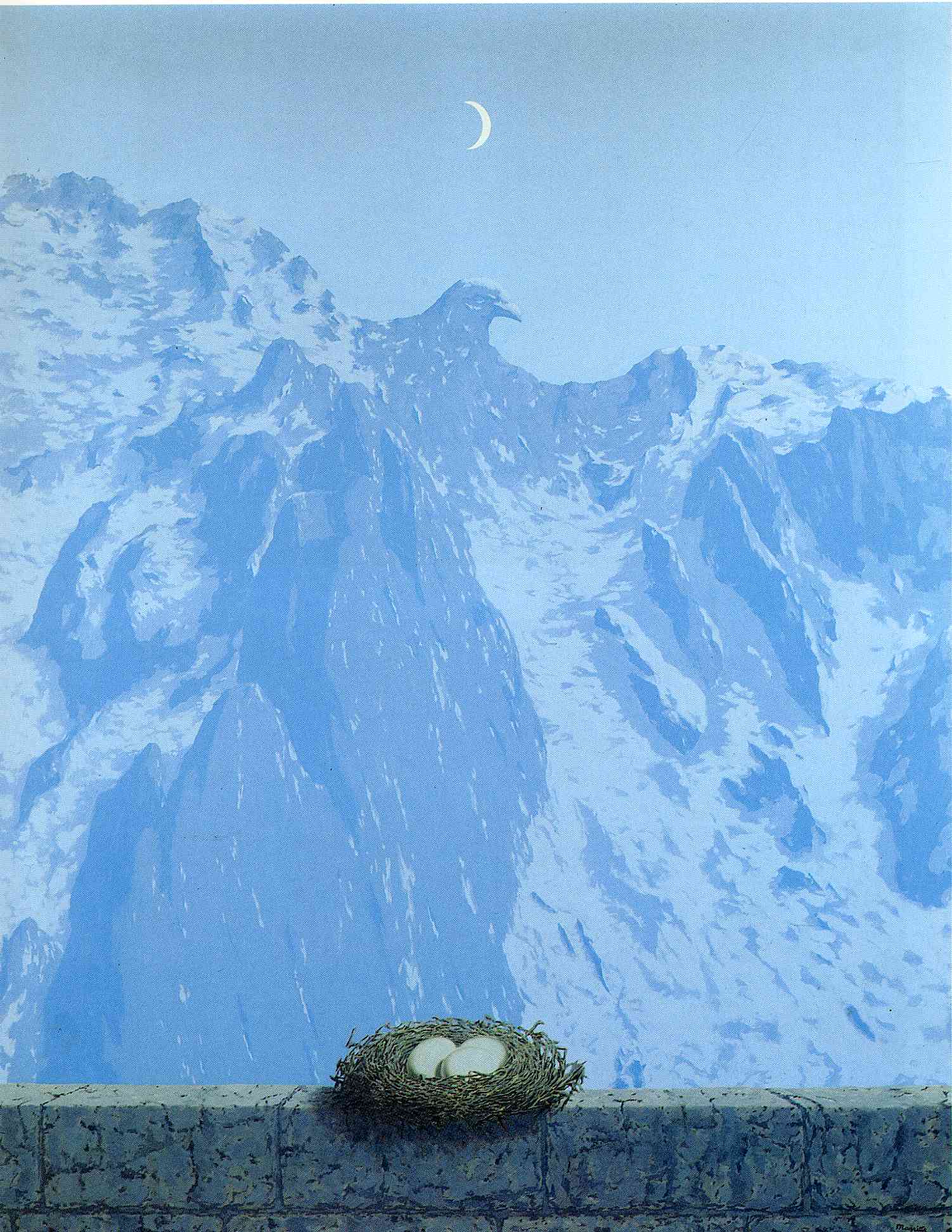
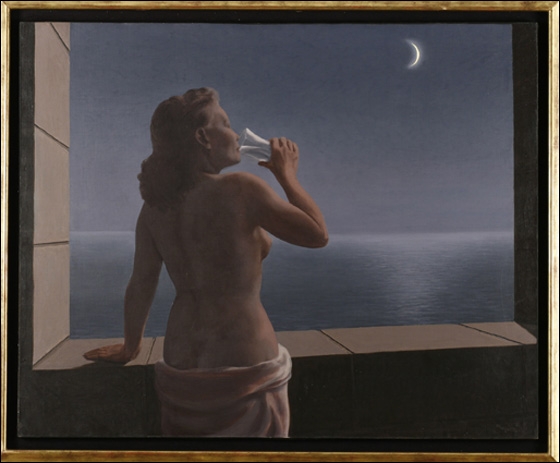


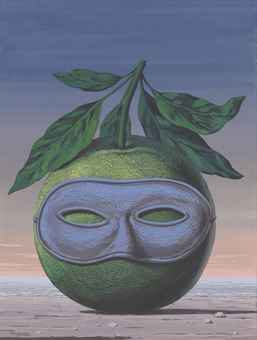
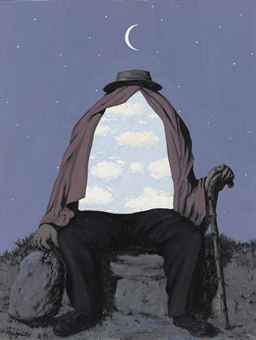
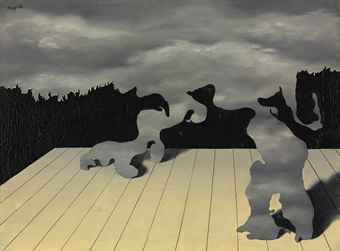
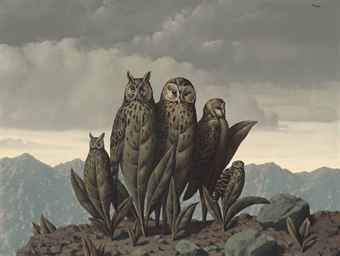
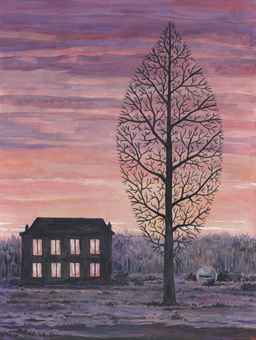
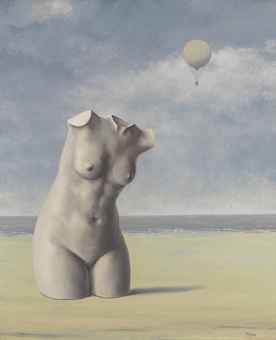
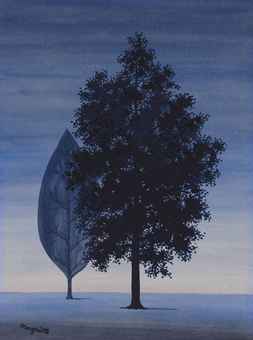
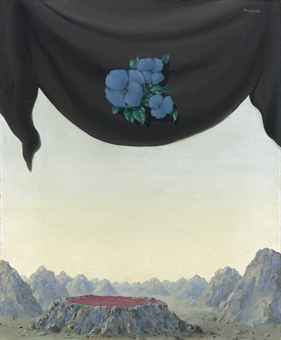
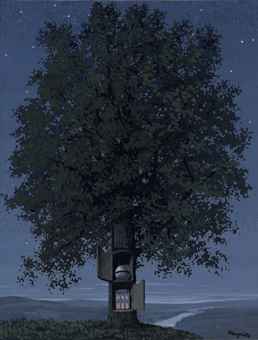
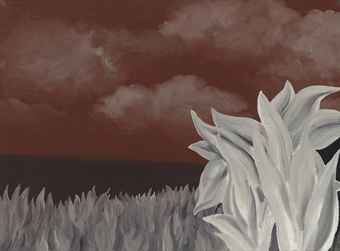
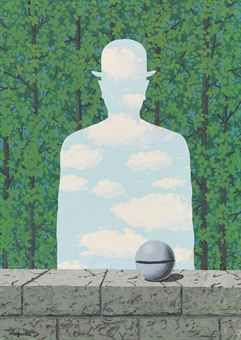
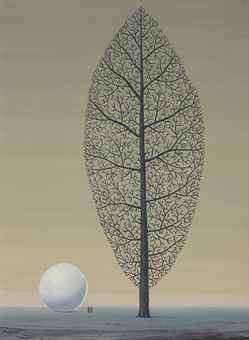
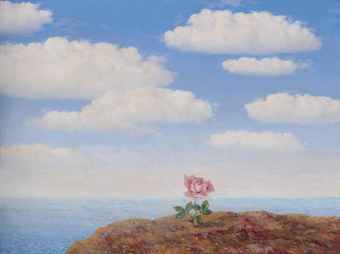
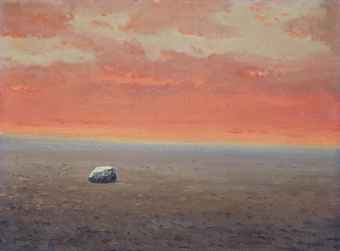
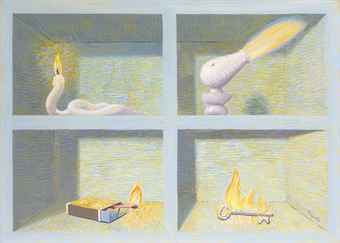
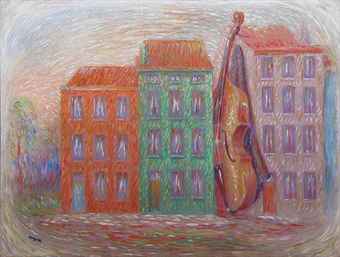

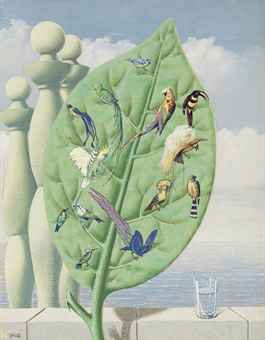
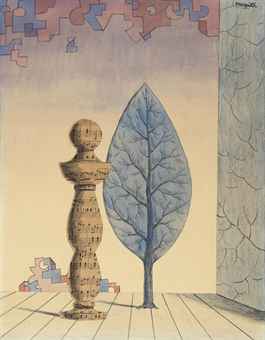

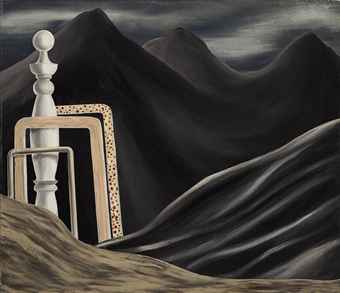
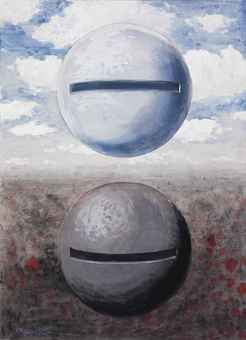
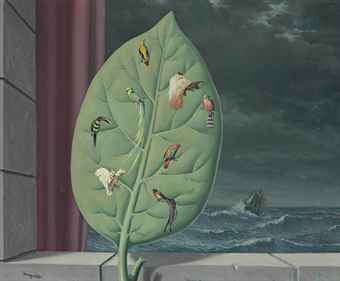
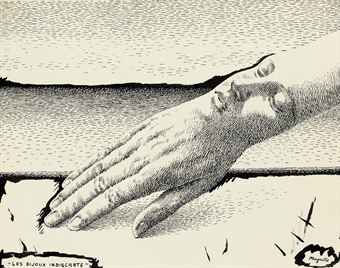
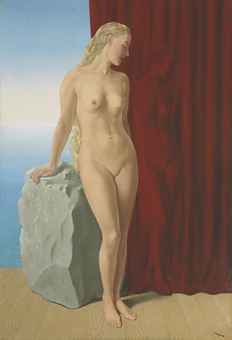
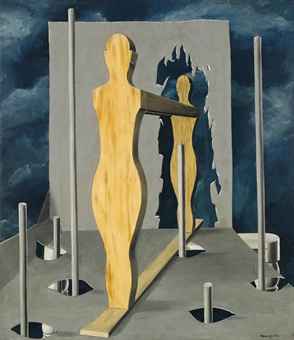
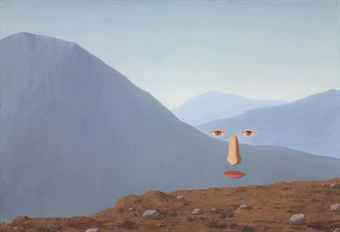
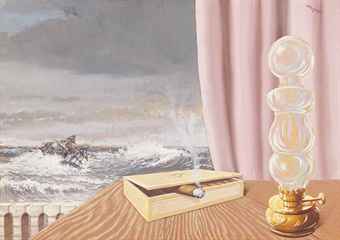
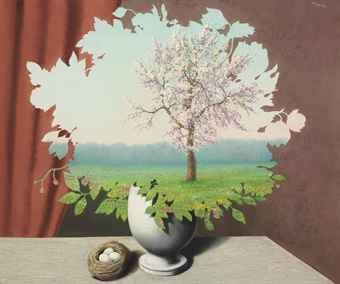
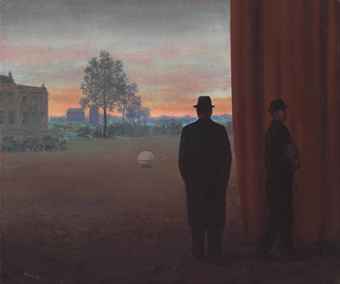
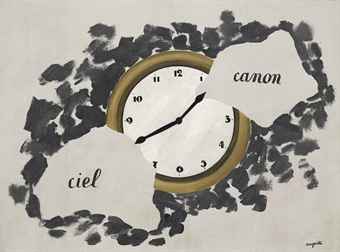
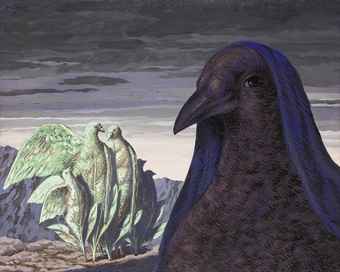

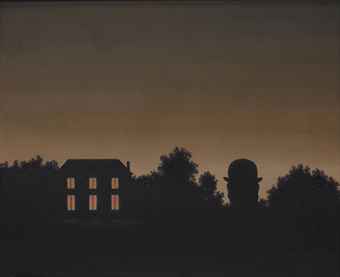
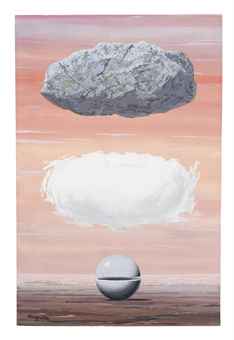
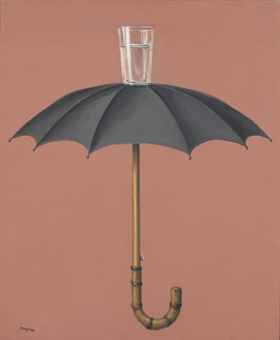
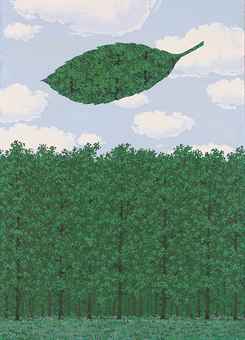
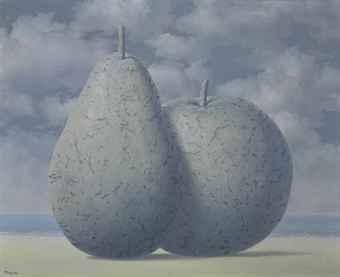
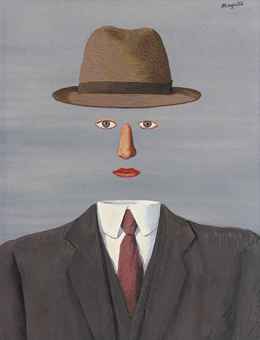
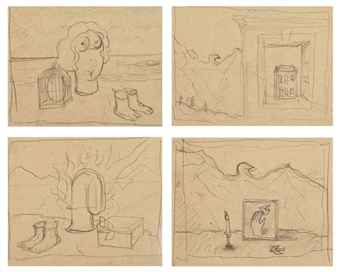
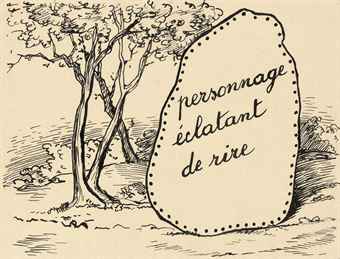
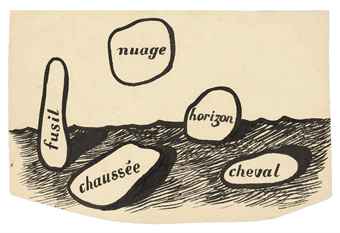
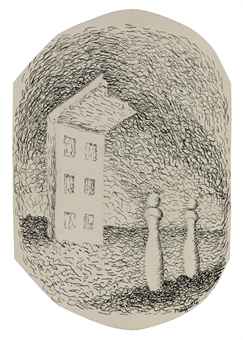
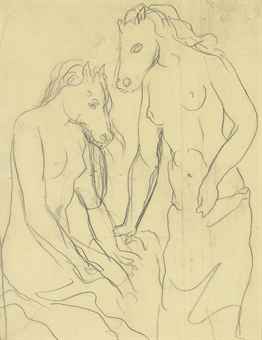
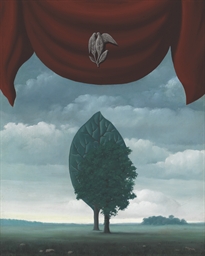
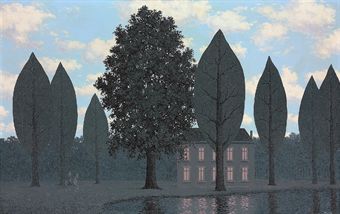
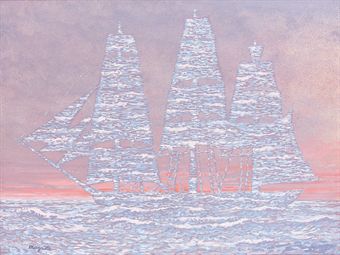
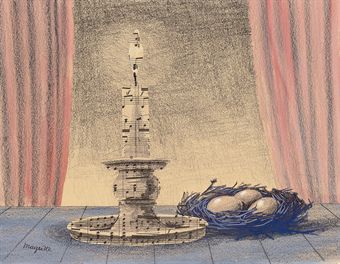
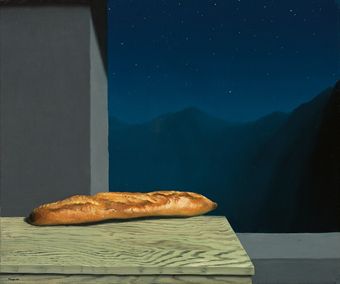
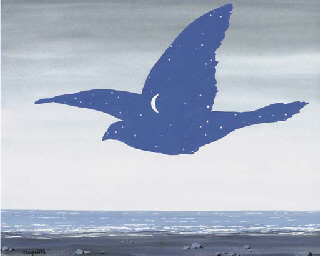



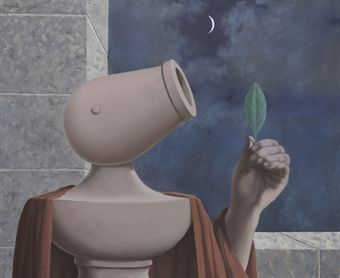
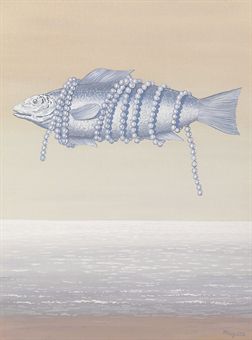

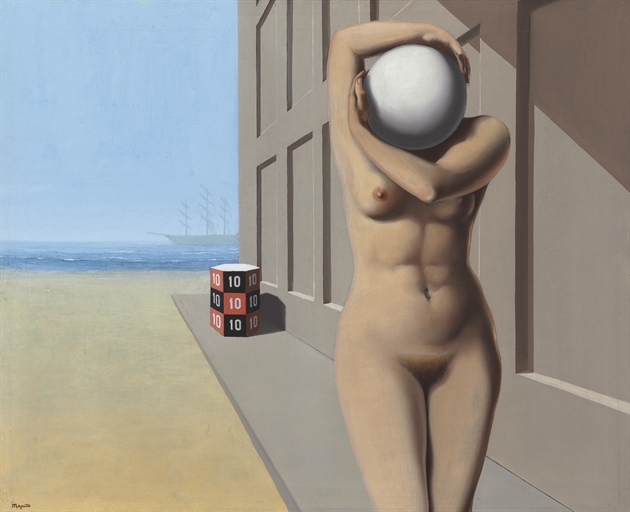
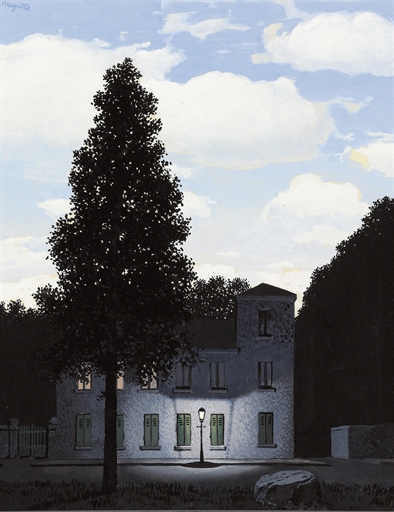
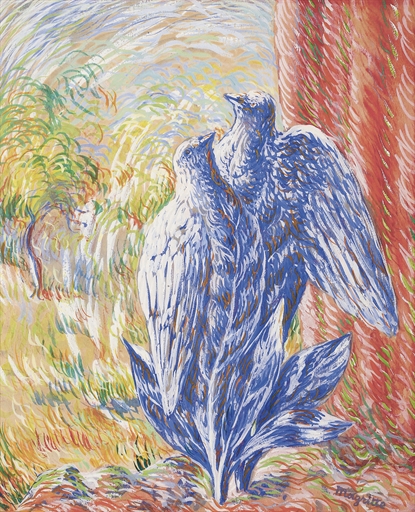
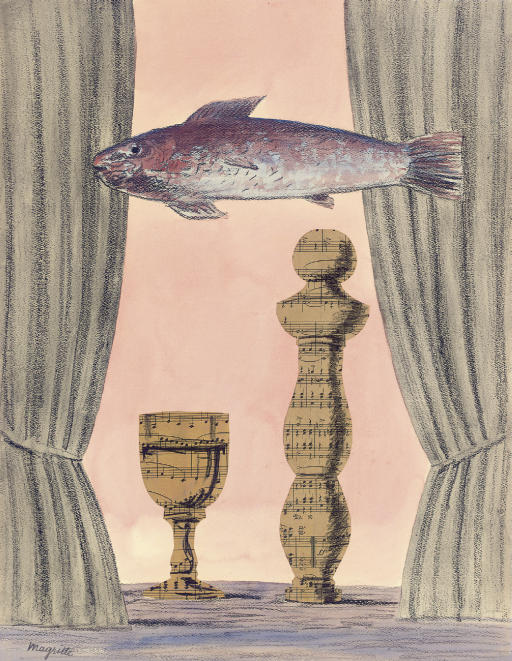
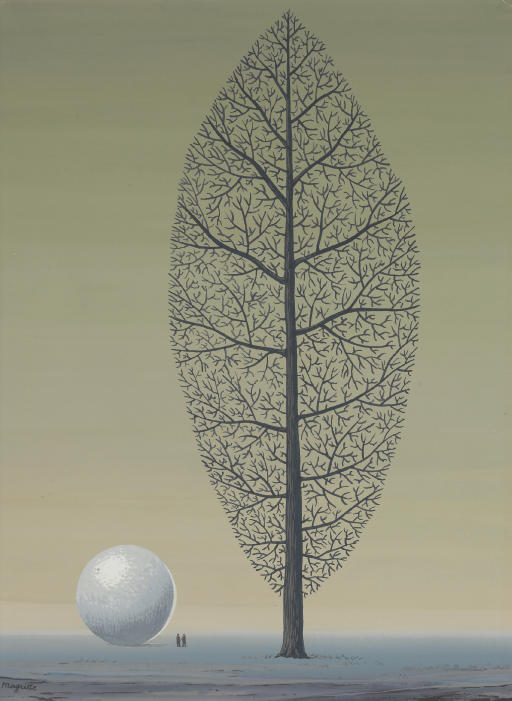
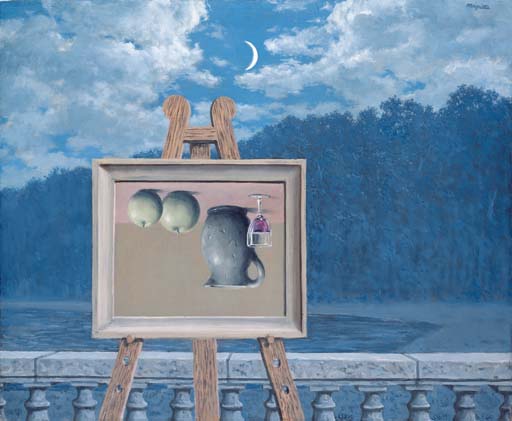
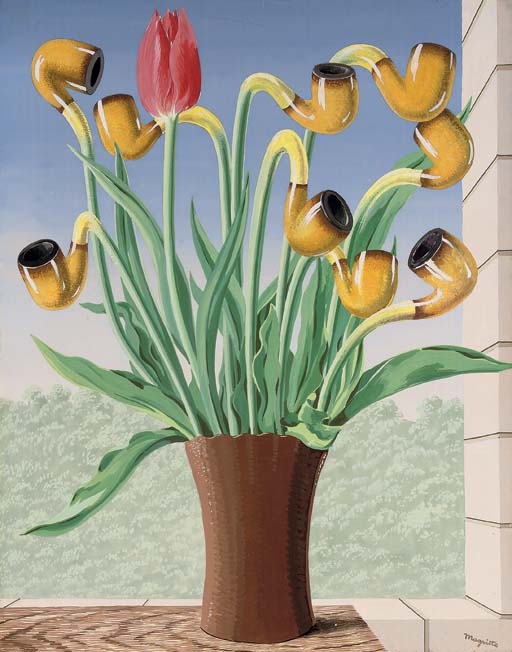
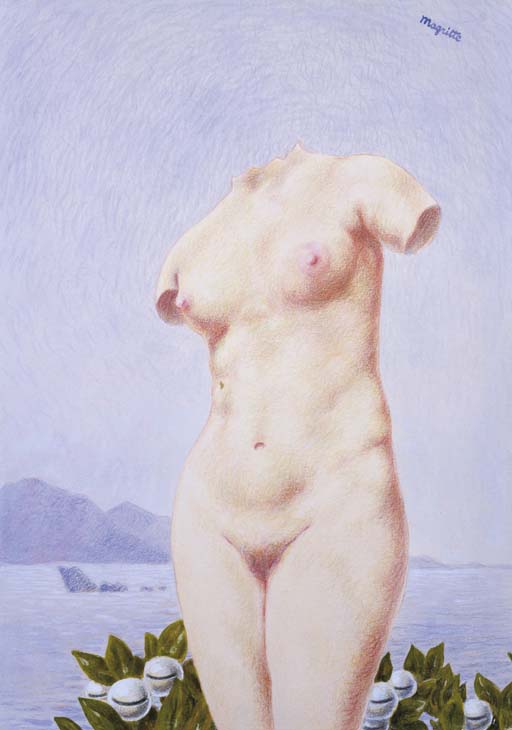
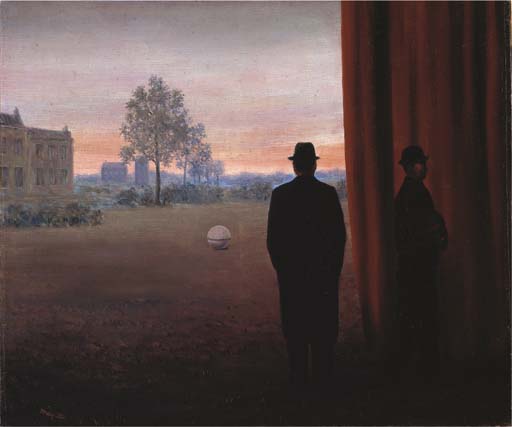

.jpg)

